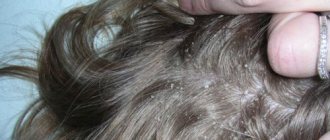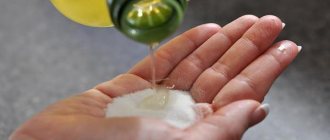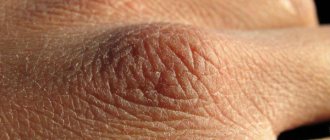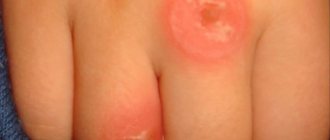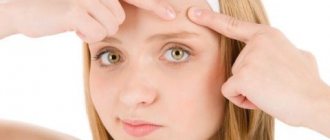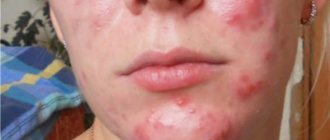Papules are called rashes that are located in the upper layer of the skin. The appearance of the rash resembles nodules on the skin, which is where its name comes from (papula - translated from Latin means “nodule”). Small compactions form in the epidermis, dermis, mucous membranes and range in size from 1 to 15 mm. Large growths are not common. "Plaques" is their second name. What causes such papules to appear and how to get rid of them will be discussed below.
What does a papule look like?
A papule is a type of pimple that looks a bit like little balls in the skin. They are dense nodules that may vary in color, size and depth of appearance. Red or pink papules are always accompanied by the formation of edema in the affected area of the skin and the addition of infection.
When pressing on the nodule it turns pale. If we compare this skin element with a pustule (vesicle), it does not have a characteristic white head. The latter is liquid pus that accumulates in the cavity of the vesicle. The process of formation of papules and pustules occurs in approximately the same way. However, in the first case, the activity of microorganisms in the skin leads to the formation of balls filled with pus. In the second, blockage of the sebaceous glands occurs with the accumulation of secretions in them. The progression of the inflammatory process leads to local edema and the appearance of a streakless formation.
Below are pictures to help you more clearly distinguish between papules and pustules. The photo shows the characteristic appearance of both skin elements. First, stripless nodules. Then characteristic formations with pus inside.
What types of papules are there on the skin? Classification
Depending on how deep the nodules are located in the skin, the following types are distinguished:
- Superficial . Occurs in the epidermis or upper layers of the dermis. They almost always do not cause pain; the size ranges up to 5 mm. Color can vary from pale pink to deep red. This skin element passes without a trace (no scars are formed).
- Deep . Occupy almost all layers of the dermis. They hurt, the color can vary from red to bluish. Resolution of the nodes occurs with the formation of scars.
- Cysts . A type of deep papules that exist for a long time. If the contents of the nodule have not been completely eliminated, then it can fester again with the additional formation of a fibrous capsule.
Depending on the size and shape, nodules are divided into:
- Miliary papules (cone-shaped). They resemble a millet grain. Most often located around hair follicles.
- Lenticular papules (flat). They are slightly larger in size and shaped like lentils.
- Nummular - reach the size of a coin.
Below is a picture showing flat, single papules on the skin. The photo shows characteristic formations that resemble lentils in shape.
Why do nodules appear?
The main reason for the appearance of this skin element remains the body’s immune defense reaction to local inflammation. When a pore on the face or other part of the body becomes clogged, its secretion (sebum) begins to accumulate in it.
As a result, a gradual stretching of the pore walls occurs. A microcyst is formed. Then, due to mechanical influence (an attempt to squeeze out the contents, cleaning the face, pressing the phone tightly, etc.) or on its own, the barrier breaks through, and the secretion from the gland comes out into the surrounding space or tissue. Immune cells are immediately sent to this place, and aseptic inflammation develops, which is manifested by local edema with the formation of a characteristic nodule.
Another cause of papules is hormonal changes in the body. Very often, new elements appear during puberty or pregnancy.
Types of rash with papular dermatitis
There are several types of papular dermatitis rash - these are maculopapular, erythematous-papular, maculopapular rash and some others.
- With an erythematous-papular rash, there is usually no itching, and the pattern of papules is symmetrical. An erythematous papular rash affects the face, legs, arms, and lower back.
- A maculopapular rash occurs with measles, when the papules merge into one continuous red mesh, forming a vast inflamed surface of the epidermis.
Papules on the face
This type of nodule occurs quite often. The main reason for this is the overactive synthesis of sebum, which provokes regular blockage of the corresponding pores. Visual defect is one of the main reasons for visiting beauty salons. If such manifestations are ignored and hygiene rules are not observed, the pathological process can progress and spread to large areas of the face.
To overcome the problem, you need to consult a dermatologist. After differential diagnosis of skin elements and establishing the cause of their appearance, the doctor offers a set of procedures and products that will help reduce the number of nodules or completely get rid of them.
Self-medication is highly discouraged, since such skin elements can be symptoms of quite serious diseases (syphilitic papules, rashes associated with anthrax, chickenpox, and the like).
Visually, the nodules look like this.
The picture shows typical papules on the face. The photo demonstrates the presence of characteristic small bandless elements slightly protruding above the surface of the skin. The number of formations may vary significantly. It all depends on the individual characteristics of each person’s skin.
Medicines and methods of prevention
A small child may often develop rashes on the legs, arms, neck, and under the armpits of prickly heat. Adults are also subject to similar problems. To treat prickly heat, use zinc oxide powder or salicylic-zinc ointment. When using these drugs to treat children's skin, you should first consult a pediatrician. For kids, it’s better to buy powder and chamomile flowers. You should wipe the baby’s skin with the infusion of the medicinal plant, and use powder instead of baby cream.
The rash with scarlet fever spreads throughout the patient's body, but the most abundant rashes are observed in the armpits, popliteal, elbow, inguinal folds and in the bends of the limbs. The cause of the rash is the causative agent of the disease - streptococci; treatment is aimed at destroying the bacteria. The doctor prescribes an antibiotic to the patient, prescribes drugs to treat the throat and antipyretics. Such a rash does not need to be treated; after getting rid of the pathogen, the manifestations on the patient’s skin go away on their own. A course of antibiotics should only be prescribed by the attending physician.
For allergic reactions, you can use the following drugs: Diazolin, Loratodine, Claritin, Lomilan and many others. For children there are syrups, suspensions, gels, ointments and drops. The most effective are: “Fenistil-gel”, “Fenistil” drops, “Eden” syrup, “Alergomax” syrup and others.
It is difficult to predict infection with any disease and protect yourself and your family from its manifestations.
Compliance with hygiene rules and taking actions aimed at increasing immunity can reduce the risk of infection. If the disease has struck, then a timely visit to a dermatologist or infectious disease specialist and proper therapy can save the patient from possible complications. The article has been verified by the editors
Certain types of papules
In certain cases, doctors talk about a number of nodules that are characteristic of specific diseases. They can be used as a pathognomonic symptom of a particular disease. Such elements include:
- Gottron's papules . Dermatomyositis-specific nodules that appear in the area of the metacarpophalangeal and proximal interphalangeal joints.
- Lichenoid papules . A characteristic feature of these elements remains the presence of peeling of their surface. A typical disease in which they form is lichen planus.
- Fibrous papule or involuting nevus. Most often it occurs in single cases on the skin of the nose. Refers to benign neoplasms with the histological structure of a papule.
A nodule that appears after the Mantoux test is isolated separately. Depending on its size, it is determined how actively the body reacted and the papule grew. A photo of a child demonstrates a hyperergic reaction.
An atypical place for the formation of papules is the surface of the tongue. Very often, such a lesion indicates the progression of dental or other diseases (syphilis).
The image clearly shows papules on the tongue. The photo demonstrates the presence of new elements on the surface, which in this case is associated with syphilitic damage to the body.
Causes
An allergic reaction on the hands of an adult and a child most often results from the following reasons:
- rashes on the palms of the hands can appear as a result of close contact of the skin on the hands with household chemical care products. These include washing powder, fabric softener, dish detergent, etc. Exposure to an alkaline environment causes significant damage to the skin.
- The causes of the disease may be unfavorable climatic conditions, when the skin is damaged under the influence of high or low air temperatures. Therefore, during the cold season, allergies on the palms of the hands, especially in children, are observed quite often.
- The influence of food allergens is of great importance on the development of the disease. Therefore, it is necessary to exclude from the diet all provoking foods and low-quality food. In children, the causes of allergies may be related to the immaturity of the digestive system.
- Allergies may be caused by synthetic fabric. Especially often, allergic rashes on the palms of a child are observed when he touches such material, as well as low-quality toys.
Treatment of papules
You can get rid of unpleasant elements on the skin, however, in no case should you do this yourself without first consulting a dermatologist. Only he can qualitatively establish the cause of the nodules and offer options with which to eliminate formations on the body or papules on the face. Treatment begins with treatment of the underlying disease.
A variety of antibacterial creams and ointments are considered good local remedies. They are applied to each affected area separately. An alcoholic or aqueous solution of iodine also shows good results. It promotes faster regression of inflammatory elements. However, its negative side effect is too much drying of the skin in the affected area.
In what cases do they appear in a child and when in an adult?
Newborns also experience various types of rashes on the body. The characteristics and causes of the rash vary:
- light yellow papules are a manifestation of erythema, which is characterized by spots on the skin reaching a diameter of up to 1.5 cm. The rash is toxic in nature and disappears on its own after a while;
- acne in newborns. About 15% of children under the age of 1 year suffer from such changes in the skin;
- red papules in the form of bubbles with liquid in a child - atopic dermatitis. The rashes are localized on the face, neck, inner part of the elbow and are accompanied by itching;
- allergic rash - this may appear on the skin due to the ingestion of allergenic products or substances into the body.
In adults, neoplasms on the body can appear at any age and have a different character. Many skin diseases and improper functioning of internal organs are accompanied by the formation of papules. Allergic reactions can also be the source of a pathological process in the epidermis.


